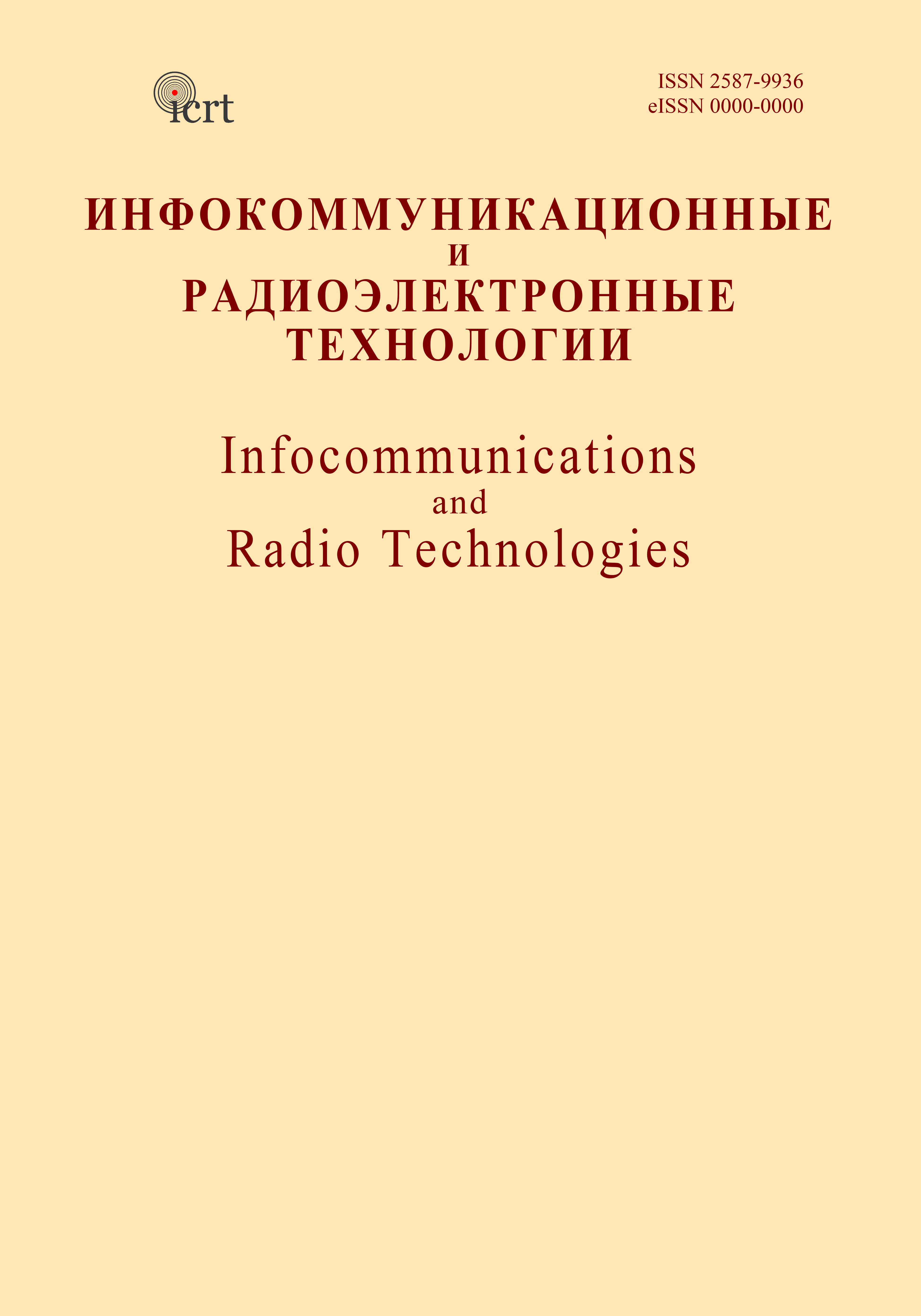An approach to simulation of the electrical characteristics of device structures based on quasi-two-dimensional films is proposed and tested. The essence of this approach is determining the values of the necessary parameters set, which describe the electrophysical properties of the quasi-two-dimensional films and the processes of charge carriers transfer in them, by first-principles calculations or experimental measurements and further use of quantum-mechanical models after their correction within the framework of device-technological simulation. Using first-principles calculations, the values of the graphene electrophysical parameters are determined taking into account the energy impact of the silicon oxide layer. By device-technological simulation, using the results of first-principles calculations, the electrical characteristics of capacitor structure and graphene-based field effect transistor were obtained.
graphene field effect transistor, quasi-two-dimensional film, first-principles calculations, device-technological simulation, quantum-mechanical effects
1. International Technology Roadmap for Semiconductors [Elektronnyy resurs]. Rezhim dostupa: http://www.itrs2.net/itrs-reports.html (data obrascheniya: 27.02.2020).
2. Borisenko V. E., Vorob'eva A. I., Danilyuk A. L. i dr. Nanoelektronika: teoriya i praktika. M. : Binom, 2013. 366 s.
3. Yang N., Yang D., Chen L. i dr. Design and adjustment of the graphene work function via size, modification, defects, and doping: a first-principle theory study // Nanoscale Research Letters. 2017. T. 12, № 642. [Elektronnyy resurs]. Rezhim dostupa: https://nanoscalereslett.springeropen.com/track/pdf/10.1186/s11671-017-2375-3 (data obrascheniya: 27.02.2020).
4. Hwang Ch., Siegel D. A., Sung-Kwan Mo i dr. Fermi velocity engineering in graphene by substrate modification // Scientific Reports. 2012. T. 2, № 590. [Elektronnyy resurs]. Rezhim dostupa: https://www.nature.com/articles/srep00590.pdf (data obrascheniya: 27.02.2020).
5. Santos E. J. G., Kaxiras E. Electric-Field Dependence of the Effective Dielectric Constant in Graphene // Nano Letters. 2013. T. 13, № 3. S. 898-902.
6. Dean C. R., Young A. F., Meric I. i dr. Boron nitride substrates for high-quality graphene electronics // Nature nanotechnology. 2010. T. 5, № 10. S. 722-726.
7. Avouris P. Graphene: Electronic and photonic properties and devices // Nano Letters. 2010. T. 10, № 11. S. 4285-4294.
8. Abramov I. I. Osnovy modelirovaniya elementov mikro- i nanoelektroniki. Saarbrücken: LAP LAMBERT Academic Publishing, 2016. 444 c.
9. Abramov I. I., Kolomeyceva N. V., Labunov V. A. i dr. Modelirovanie polevyh grafenovyh tranzistorov s odnim i dvumya zatvorami v razlichnyh rezhimah funkcionirovaniya // Nanotehnologii: razrabotka, primenenie - XXI vek. 2018. T. 10, № 3. C. 16-24.
10. Preobrajenski A. B., Ng M. L., Vinogradov A. S. i dr. Controlling graphene corrugation on lattice-mismatched substrates // Physical Review B. 2008. T. 78, № 7. S. 073401.
11. Parr R. G., Yang W. Density-Functional Theory of Atoms and Molecules. Oxford University Press, 1989. 352 p.
12. Blöchl P. E. Projector augmented-wave method // Physical Review B. 1994. T. 50, № 24. S. 17953.
13. Rignanese G-M., De Vita A., Charlier J-C. Density functional theory calculations on graphene/α-SiO2(0001) interface // Physical Review B. 2000. T. 61. S. 13250.
14. Song S. M., Park J. K., Sul O. J. i dr. Determination of Work Function of Graphene under a Metal Electrode and Its Role in Contact Resistance // Nano Letters. 2012. T. 12, № 8. S. 3887-3892.
15. Tahy K., Fang T., Zhao P. i dr. Graphene Transistors // Physics and Applications of Graphene - Experiments. InTech, 2011. S. 473-500.










